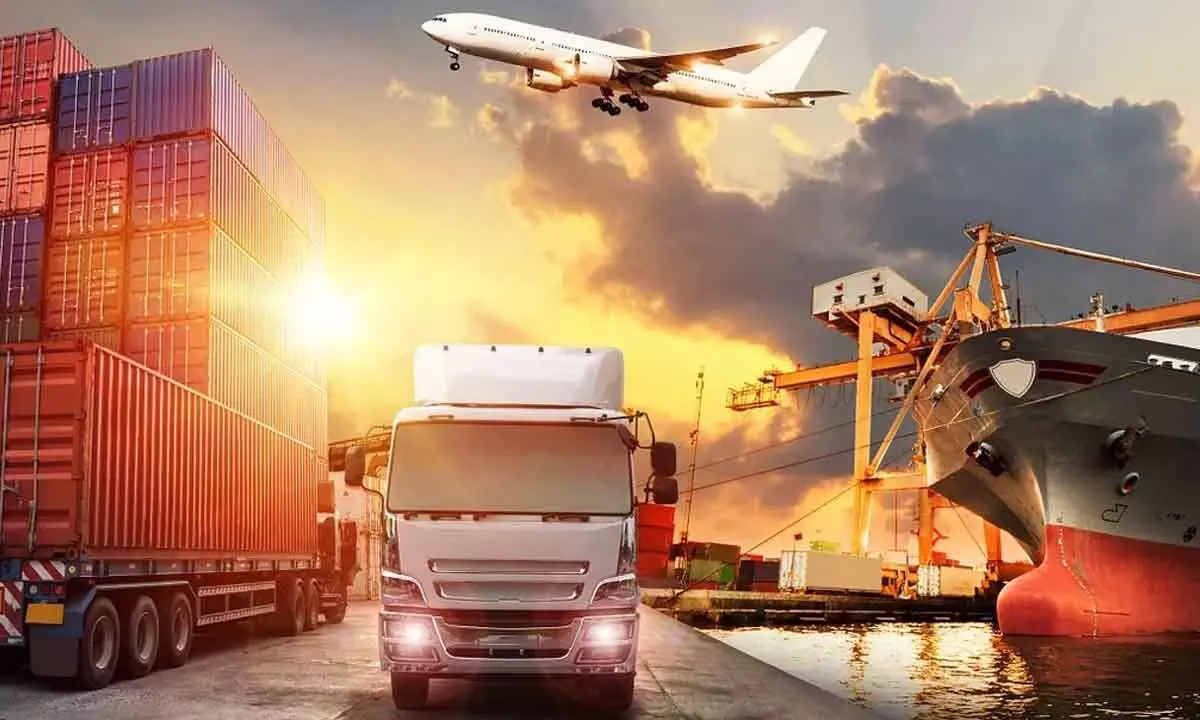Forces driving the global trade vis-à-vis the new geo-economic reality
Improved access to overseas markets is good but countries benefit most from liberalizing their own markets
image for illustrative purpose

Trade and FDI did fall slightly in 2023 as inflation moderated and supply and demand stabilized, but they still remain above pre-pandemic levels in both value and volume terms.
The political environment in a country may compel its government to come up with trade barriers to protect domestic businesses. Typical trade barriers include tariffs that are taxes on imports and import quotas that limit the number of imports permitted during a specific period of time.
According to the International Monetary Fund (IMF), the potential gains from eliminating remaining trade barriers are considerable. Estimates of the gains from eliminating all barriers to merchandise trade ranges from $250 billion to $680 billion per year. About two-thirds of these gains would accrue to industrial countries.
But the amount accruing to developing countries would still be more than twice the level of aid they currently receive.
Moreover, developing countries would gain more from global trade liberalization as a percentage of their GDP than industrial countries, because their economies are more highly protected and they face higher barriers.
Although there are benefits from improved access to other countries' markets, countries benefit most from liberalizing their own markets. The main benefits for industrial countries would come from the liberalization of their agricultural markets. Developing countries would gain about equally from liberalization of manufacturing and agriculture. The group of low-income countries, however, would gain most from agricultural liberalization in industrial countries because of the greater relative importance of agriculture in their economies.
A Deloitte study suggests that following the global financial crisis between 2008 and 2009, trade growth slowed compared to the so-called hyper-globalization era of the years prior to it. Still, companies diversified their exposure across emerging markets in search of new growth opportunities. Later in the decade, however, worsening geopolitical tensions—most notably between the United States and China—began to sow seeds of doubt on the future trajectory of trade. The pandemic and then the war in Ukraine, added to the pressure, making it urgent for companies to adopt a more strategic and cautious approach to managing global businesses.
And yet it is wrong to believe that trade has taken a negative turn—at least so far.
Global trade in goods and services has proven resilient, recording an all-time high of $32 trillion in 2022, a remarkable 27% increase compared to 2019. Global inward foreign direct investment (FDI) stocks also rose from $36 trillion in 2019 to a high of $47 trillion in 2021.
Trade and FDI did fall slightly in 2023 as inflation moderated and supply and demand stabilized, but they still remain above pre-pandemic levels in both value and volume terms.
One of the defining characteristics of global trade in recent years has been the development of new trade corridors influenced by geo-economic competition.
A prime example of this is the emergence of what we would describe as “horseshoe-shaped” trade corridors linking China and the United States via other countries. This can be considered as a byproduct of the US-China trade conflict, which has compelled some companies to strengthen their production capacity outside China to be able to serve the US market.
The most striking example of this dynamic has been Vietnam, which borders the manufacturing-rich provinces in China’s south. Between 2018 and 2022, its imports from China increased by 80% while its exports to the United States rose by 159%. This is most notably the result of an increase in Vietnam’s imports of intermediate goods from China and exports of finished goods to the United States.
Similar patterns can be seen in other emerging markets with a strong industrial base, including Thailand, Malaysia, and Mexico.
These new trade corridors suggest that more complex supply chains, with goods transiting through more locations before reaching the final consumer, have played a significant role in the recent expansion of global trade. While longer and more diverse supply chains may entail higher costs, they also generate more resilience by building in additional capacity and inventory dispersed across multiple locations. Companies anticipate that this will help them overcome the challenges posed by an increasingly uncertain geo economic environment.
Navigating this new environment will no doubt be quite a challenge. Geopolitical forces will continue to create obstacles in the market economy that entail higher costs and barriers to trade. Companies should bear in mind, however, that such market inefficiencies also generate new value-creation opportunities. Engineering a successful business strategy in the new geo-economic reality should not only be about managing risks but also about capitalizing the opportunities that come by.

